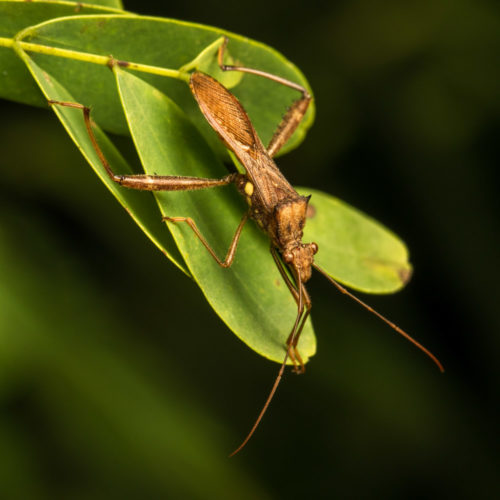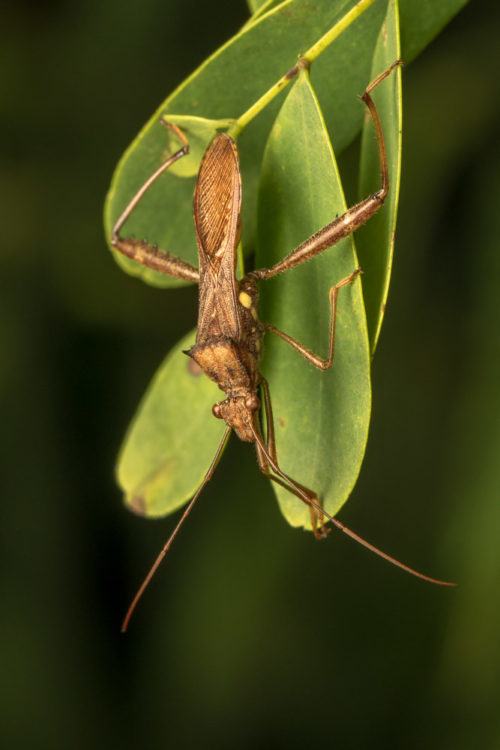
I found this Pod sucking bug Riptortus linearis on Peacock Flower (Caesalpinia pulcherrima) leaves in my garden. This bug is a major pest of Soybean. They are also known to feed and breed on seed pods of peacock flowers. I was using Canon EOS 5D Mark IV with Canon EF 100mm f/2.8L Macro IS USM. Illuminated with my LumiQuest SoftBox III fitted on Godox Ving V860C II E-TTL Li-ion Camera Flash.

Riptortus belongs to family Alydidae, commonly known as broad-headed bugs, is a family of true bugs very similar to the closely related Coreidae (leaf-footed bugs and relatives). There are at least 50 genera and 290 species altogether.

The most notable characteristics of the Alydidae family are that the head is broad, often similar in length and width to the pronotum and the scutellum and that the last antennal segments are elongated and curved. The compound eyes are globular and protruding, and they also have ocelli. The femora of the hind legs bear several strong spines; the tarsus has three segments. Most species have well-developed hemelytra (forewings), allowing them to fly well, but in some the hemelytra are vestigial. The membranous part of the hemelytra has several closely spaced long veins.

Alydidae is generally of dusky or blackish colouration. They frequently have scent glands that produce a stink considered to be worse than that of true stink bugs (Pentatomidae). The stink is said to smell similar to a bad case of halitosis. Riptortus linearis bugs are restricted to Asia, Oceania. Possibly, Australia. It is also recorded from the Solomon Islands.

The hosts include Legumes, such as Acacia auriculiformis, Acacia mangium, Eucalyptus torelliana, Caesalpinia pulcherrima (peacock flower), Cassia occidentalis, Citrus sinensis (navel orange), Glycine (soybean), Psophocarpus tetragonolobus (winged bean), Vigna radiata (mung bean), Vigna unguiculata (cowpea)

Eggs of Riptortus are laid on bean leaves and those of other plants; usually, the eggs are laid singly. They hatch and the nymphs go through five stages. The nymphs are ant mimics as they look like large black ants, presumably to protect them from predation. Adults are dark brown and about 20 mm long.

They are a major pest of beans. Both adult and nymphs “sting” the beans in the pods, feeding on the juices in them, so that the beans fail to mature. The pods turn brown, shrivel and die. Severe damage is caused to bean crops, long beans especially, in Pacific island countries. The reduviids (assassin bugs), mantids (preying mantids), spiders and wasps that are known to attack Riptortus eggs, and prey on nymphs.

